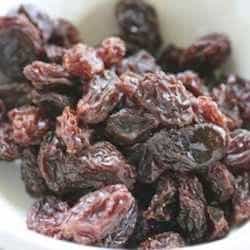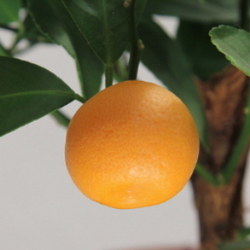(Editor's Note: This article was originally published on Januar 26, 2009. Your comments are welcome, but please be aware that authors of previously published articles may not be able to respond to your questions.)
All but one have been genetically engineered to be more pleasing to the palate, more easily eaten, and economical to grow commercially. Most of the best varieties are available through major seed companies and specialty catalogs, though I didn't list all of them. The BIG news for 2009 is Burpee's seedless hybrid tomato. 'Sweet Seedless' is available to gardeners in this year's catalog and, for me, will be a welcome addition to the fresh vegetables I can tolerate.
The BIG news for 2009 is Burpee's seedless hybrid tomato. 'Sweet Seedless' is available to gardeners in this year's catalog and, for me, will be a welcome addition to the fresh vegetables I can tolerate.
First of its kind, Burpee describes this tomato as "...first rate for taste...because there are no seeds to store the sugars for later use, all the sweetness is immediately available to enjoy...." The catalog also states that the plants have "a full package of disease resistance...", so if you're planning to try this one, you can probably rest easy about it being temperamental. Medium size--about 10 to 12 ounces--this hybrid took 6 years to develop, but matures in 68 days.
Back to the commonality of the fruits and vegetables in the picture. They are all seedless. The push to develop seedless varieties and other hybrids began in the mid-nineteenth century with the work of Gregor Mendel. Since that time, the science and technology for breeding better plants has grown, increasing the consumer's desire to have fruits and vegetables that are seedless, thin-skinned, burpless, bitter-free, and so on. The seedless trend really took off in the 1970s when the first seedless cucumbers came into production.
All seedless varieties are mostly the result of either 1) the development of fruit without fertilization (parthenocarpy) or 2) pollinated fruit that aborts the ovules or embryos without producing mature seeds (stenospermocarpy). Since the fruit lacks seeds, propagation must be done from cuttings or grafting (except bananas, see below).
 What Other Seedless Varieties Are Available?
What Other Seedless Varieties Are Available?Banana: grown from offsets called "pups", the banana has miniscule soft seeds that are only easily seen when the fruit is overripe. Commercially produced bananas are cloned from one source--the 'Cavendish' cultivar.[1] Seeds are available from Seedman.com, Trebrown Nurseries, Seedrack.com, and Jungleseeds.com
Cucumber: first seedless varieties were grown by European and Dutch greenhouses, and quickly became popular in other parts of the world. Many varieties are available from seed companies such as Paramount Seeds and Park Seed Company.
Eggplant: transgenic plants were developed and will produce even in unfavorable environmental conditions. Varieties include: 'Rhapsody (EP-0401)': 8 inches long, matures 80 days; 'EP-04-03': 4-6 inches long, matures 80 days; and, 'EP-04-04': oblong shape 6-7 inches long, 3-4 inches wide, matures 76-79 days. Seeds for seedless varieties available from D. Palmer Seed Company, West Coast Seeds, and Park Seeds.
Grape: the common green Thompson seedless grapes are all descendents of a European seedless grape. They've been grown in the U.S. since 1872, as well as other varieties from the same strain. The 'Flame' seedless grape was the result of over 100,000 seedlings during the course of development, with the final product being a cross between five varieties. Willis Orchards and Henry Field's carry vines for these grape varieties.
Orange: the naval orange is descended from a tree found in Brazil in the nineteenth century. All naval oranges sold today are from that same tree! Home gardeners can buy orange trees from Clifton's Nursery and Neeps Lawn & Garden.
Pineapple: cultivated pineapple fruit is seedless because it is not  allowed to cross pollinate (pineapple cannot self-pollinate), but the plant can asexually propagate through its leafy crown. I found no sources for viable pineapple seed.
allowed to cross pollinate (pineapple cannot self-pollinate), but the plant can asexually propagate through its leafy crown. I found no sources for viable pineapple seed.
Watermelon: introduced in the 1990s, these juicy, sweet melons  have a hard shell which makes them easily shipped and provides a longer shelf life. (Regular watermelons have up to 1,000 seeds per melon.) Varieties available from Burpee and Park Seed.
have a hard shell which makes them easily shipped and provides a longer shelf life. (Regular watermelons have up to 1,000 seeds per melon.) Varieties available from Burpee and Park Seed.
In 1941, the first coreless, seedless apples ever known were discovered in a Huntington Park, California backyard. The USDA set about working with the tree with the idea that seedless apples would be as common as seedless oranges. With no seeds to plant, the fruit had to be propagated by grafts on normal apple trees.[2] However, as of 2005, the possibility of commercially producing this fruit was still a long way off.
Several vegetable types have the capacity to produce mild to severe intestinal discomfort through the production of gas during digestion. Cucumbers are one of the worst offenders. Burpless cucumbers (Cucumis sativus) have low levels of cucurbitacins--compounds that cause the fruit to taste bitter and inhibit digestion. So, most seedless cucumbers have the added advantage of also being burpless and bitter-free.
Burpless cucumber varieties include: 'Burpfree Hybrid', 'Garden Sweet Burpless', 'Jolly Green Hybrid', 'Green Knight Hybrid', 'Sweet Burpless Hybrid', 'Big Burpless Hybrid', 'Orient Express Hybrid', and 'Tasty Green Hybrid'--all available from Burpee. 'Sweeter Yet Hybrid' and 'Early Spring Burpless' are available from Henry Field's.
An interesting aside about "burpless" vegetation. Australian and New Zealander scientists are developing a grass that will cut the amount of methane gas that cows burp up when chewing their cuds. Why? Because huge bovine herds contribute significantly to global warming. Don't laugh. The Inter-governmental Panel on Climate Change calculates that methane makes up 14.3% of humanity's contribution to global warming.[3] This is one way to combat greenhouse gas emissions produced by the agricultural industry. Well, maybe you can laugh now. Have you ever heard a cow burp?
Bitterless Cucumber varieties include: 'Marketmore 97' (Territorial Seed Company), 'Tyria' (Lefroy Valley), and 'Holland Hothouse' (Reimer Seeds).
Most cucumber varieties will become bitter during growth if they have insufficient moisture or widely varying temperatures. Two varieties will do well in less-than-optimum conditions. 'Armenian' (good in hot weather) and 'Socrates' (good for cooler conditions). 'Armenian' seeds are available at Anioleka Vegetable Seeds Company; 'Socrates' seeds are available at Johnny's Selected Seeds.
 Tearless -- Last But Not Least
Tearless -- Last But Not Least
Imagine being able to chop onions without sobbing. In 2007, researchers from New Zealand and Japan presented their research results on a tearless onion at the 2nd World Onion Congress in The Netherlands. The onions are described as being in the developmental stage. The research consists of using a gene-silencing technology known as RNAi (developed by Dr. Peter Waterhouse at CSIRO in Australia). By cutting into an onion, the destroyed cells release enzymes which convert to an irritating gas. The new process allows researchers to "retarget the plant's own natural regulation system without expressing foreign proteins in the plant."[4] The system can also be used to combat viruses, allowing the production of hardier crops. The bad news is, the onion will probably not appear on the consumer's table for about 10 years.
Meanwhile, to avoid those miserable interactions with onions, try these tricks:
1. Keep your face as far away as possible while chopping
2. Breathe through your mouth; the gas is less apt to reach your eyes
3. Use a very sharp knife, which will destroy fewer cells
4. Temperature affects the enzyme's ability to react, so peel the onion and chill it before slicing
5. Cut the onion in half, then rinse each half with water to wash away the enzymes
6. If you are extremely sensitive to onion irritation, wear goggles.
What does a writer do with the "research" materials? FRUIT SALAD!
Make 2009 the year to try some of science's best inventions!
1. The MAD Scientist Network. http://www.madsci.org
2. Time. http://www.time.com/time/printout/0,8816,849570,00.html
3. Science Daily. http://www.sciencedaily.com/releases/20008/05/080506120859.htm
4. Science Daily. http://www.sciencedaily.com/releases/2008/02/080202115345.htm
Onion chopping tricks found at http://www.damngoodrecipes.com/print_article.php?id=17

















